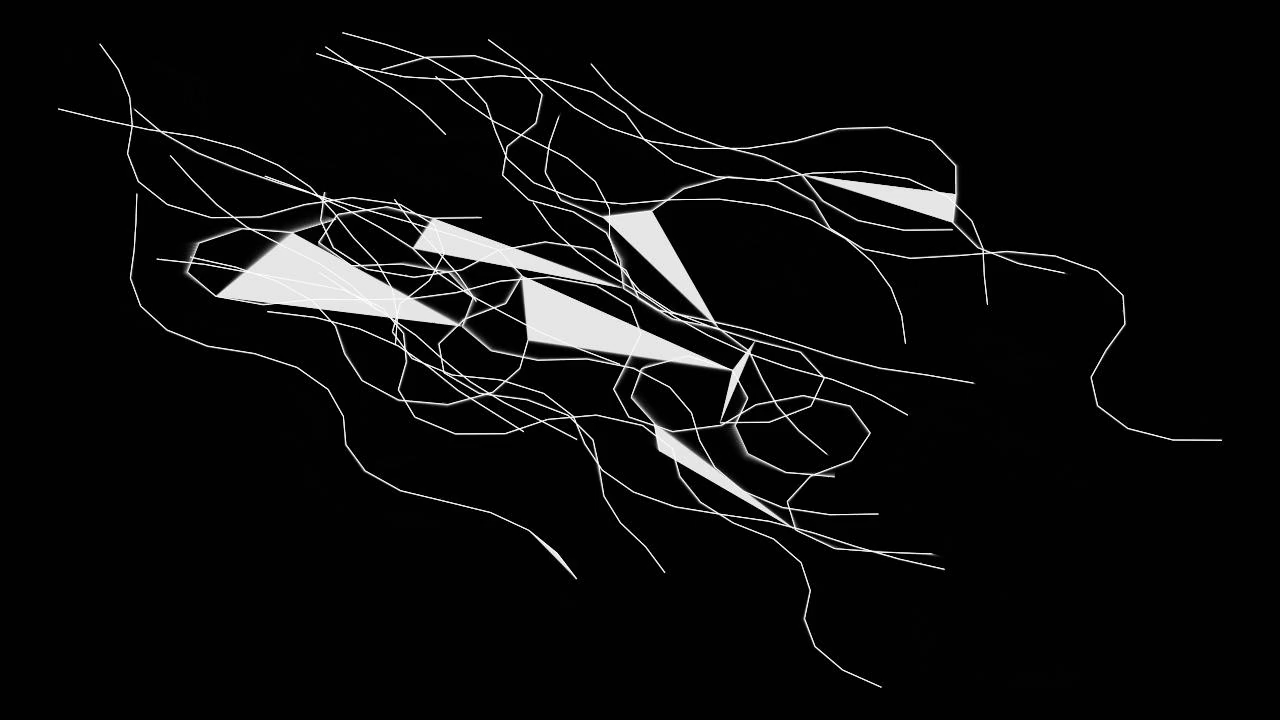Imperfect Reconstruction
Navigation
Imperfect Reconstruction
Space, Video and Sound Installation
Lisa Horvath, David Pirrò Hanns Holger Rutz
Graz Austria, ESC medien kunst labor November 2016

An algorithmic project by Lisa Horvath, David Pirrò, Hanns Holger Rutz.
The image of coding/decoding often includes the ideal of perfect reconstruction. Something real—an experience, a thought, a movement—can be transformed into a finite set of elements that may then be transported and unfolded as an evocation of that original experience or movement. Something is communicated (duplicated and made equal). It bothers us when the reconstruction is not complete, when the distance between the pairs of conceptualisation/perception, intention/interpretation… is not annulled: somebody did not understand.
What we are interested in for this exhibition are those distances and gaps that produce imperfection, understood as the resistance of thoughts and movements to become determinate; understood as their durational and iterative configuration. Located at the intersection of computer art and sound art, we are primarily interested in algorithmic movements. In algorithmic practices pieces of code assume the production of forms and establish mutual writing processes between human and computer.
Increasingly, algorithms are given authority to make decisions about our lives. Dystopian scenarios stretch to the expendability of humankind altogether because so-called artificial intelligence might soon outpace our slow biological evolution. But going beyond the traditional view of algorithms as a tight interlocking of logic and control structures, algorithms involve speculative computations, the production of materials that are yet “continually unrealized” (Parisi). In other words, imperfection (incompletion) may well lie at the centre of algorithms and endow them with an intrinsic poiesis, making them an ally for the retention of freedom.
How to make imperfect reconstructions? One strand we have been working with in the past years is the use of similarity as a motor for algorithmic movement. For example, a computer can be instructed to find among a set of sounds those that are particularly similar or dissimilar to other sounds or it may be instructed to evolve sound structures to approximate a given sound. What becomes important is that processes are instantiated that produce trajectories which then become themselves the aesthetic objects and reveal something about their inner motions rather than focusing on the target sounds. Another strand is the introduction of reconfigurations, the addition or shift of elements and relations between elements. For example, trajectories may be translated from the audible to a graphical domain or to a textual domain and back again, foregrounding gaps inherent to such translations. In this exhibition, we will be especially working with the algorithmic treatment of text and language. A third approach is the coupling of systems, something that we explored in the project ‘Anemone Actiniaria’. Once the two machines that we have been developing for several years are oriented towards each other and composed, “a new machine arises” (von Foerster).
In ‘Imperfect Reconstructions’, we will be creating an overall installation that decomposes into a number of corresponding works, combining sound with image, text and video. There is a focus on the durational and iterative aspects of imperfection: We want to show the stages through which pieces emerge and how the reconfigurations take place. Like a Langzeitbelichtung, things that happen sequentially or that are dislodged become integrated. The paths of reconstruction thus also obtain something “forensic”, they form speculative (hi)stories
Imperfect Reconstruction: an algorithmic project
Catalogue
Lisa Horvath, David Pirrò Hanns Holger Rutz
ISBN:978-3-9503349-1-3
Graz Austria, 2017
A catalogue of the project has been produced in May 2017. It is published by esc media art laboratory (ISBN 978-3-9503349-1-3), and distributed via Reagenz Verlag. The book was realised with the generous help of the Department of Culture of the City of Graz and the University of Music and Performing Arts Graz. The catalogue was edited by Hanns Holger Rutz, with layout and design by Nayarí Castillo.
It features contributions by Luc Döbereiner, Gerhard Eckel, Klemens Fellner, Tamara Friebel, Reni Hofmüller, Lisa Horvath, Veronika Mayer, David Pirrò, Martin Rumori, Hanns Holger Rutz, Reiko Yamada.
The catalogue has a 20x20 cm format and 64 pages. It was created as a 300 copies edition with individual and numbered covers.
The catalogue was publicly presented on June 1st at esc Graz.
